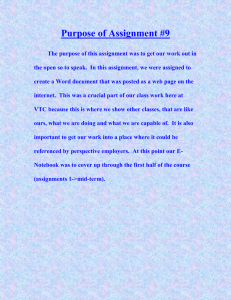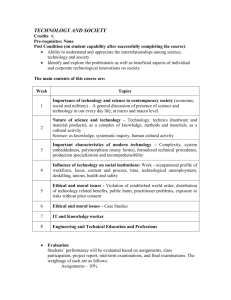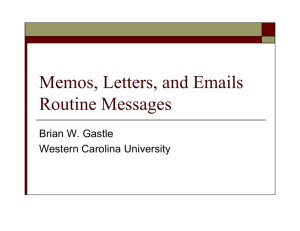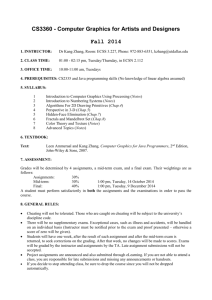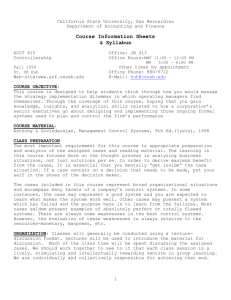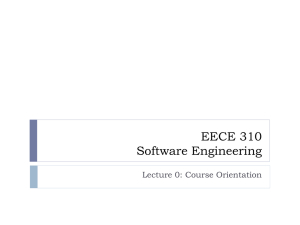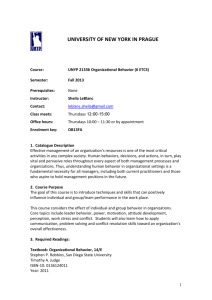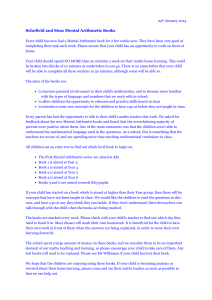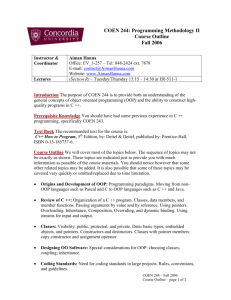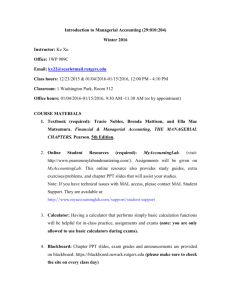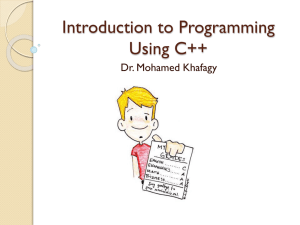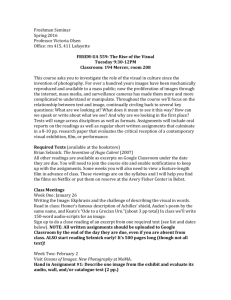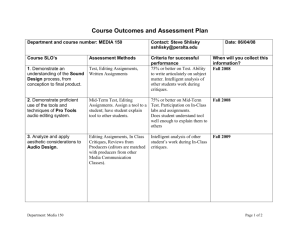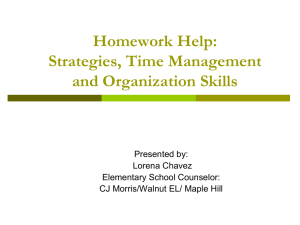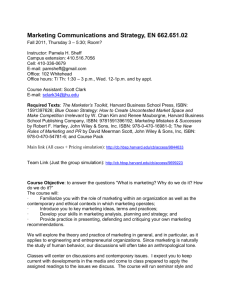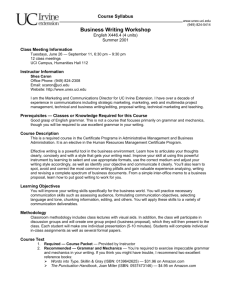Session 1 - SFU Blogs
advertisement
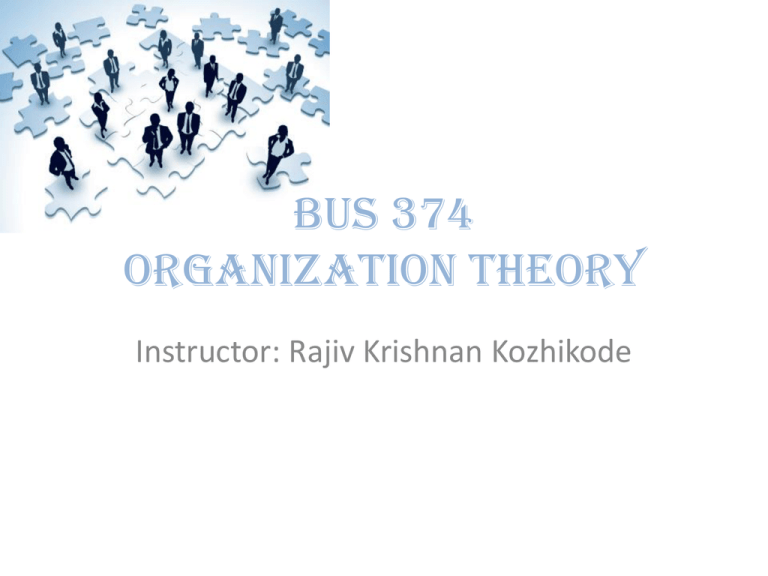
BUS 374 Organization Theory Instructor: Rajiv Krishnan Kozhikode Agenda for today • Syllabus Overview – What is this course about? – How is it delivered? – How are you examined? – Course management • Team Formation and Assignment Allocation • A brief discussion of “What is an organization?” What is this course about? • It is about macro-organizational theory. • We will seek to answer the following questions about organizations 1) What are organizations? 2) Why do organizations exist? 3) Why are there so many different types of organizations? 4) Do organizations act similarly? 5) What are the consequences of acting differently? 6) How do organizations evolve? 7) How do organizations interact with each other? How is the content delivered? • Critical evaluate academic articles. – Through traditional lectures – Team activities involving weekly reports – In class discussion of reports There are NO designated textbooks for this course. Evaluation criteria 1. Class participation (10%): Bases on contributions in class rather than on attendance, so come well prepared. 2. weekly team assignments (30%): 14 teams, each team will submit one research application memo based on assigned articles. 3. First mid-term exam (30%): After four theory sessions an open book exam comprising of scenariobased and theory-based short answer type questions will be administered on the 10th July 2013. 4. Second mid-term exam (30%): After first eight sessions, a closed-book, multiple choice cumulative exam will be administered on the 22nd July 2013. Course management • Course blog – http://blogs.sfu.ca/courses/summer2013/bus374 • Article retrieval – Search Google Scholar first – If you are in the university network, you will be able to easily download the article from there. – If you are in an outside network, look for JSTOR links or SSRN links or other direct links – Else, search for it at university library databases Team Formation • We need 14 teams of 5 to 6 team members. • Random team assignments. • Random article assignments to teams. • “No free riding” policy Session 1 What are Organizations? Selznick’s view of organizations • Some examples of organizations – Business corporations – Trade unions – Governments – Political parties – Student associations • All of these represent rationally ordered arrangements to achieve particular ends Individuals and organizations • Individuals are supposed to play roles that help achieve these ends • But they bring more that just “roles” to the organizations limiting the efficiency of the system . • Authority is aimed at reducing inefficiency • But control and consent go hand in hand. • Therefore an organization takes a cooperative function comprising of formal and informal interactions that shape actions aimed at achieving various ends. Imperatives for a structuralfunctional analysis of organizations • The security of the organization from external threats • Stability of lines of authority • Stability of informal relationships • Continuity of policy and its source of determination • Homogeneity of outlook about the organization’s role Chandler’s survey of theories of the firm – A Neo classical view of the firm as a economically efficient system – An organization as a nexus of contracts between various principals and agents aimed at generating economic efficiency in production – Transaction cost theory’s view of the firm as an alternative to the market to minimize opportunism and manage bounded rationality – Evolutionary theory’s view of the firm as an organization of evolving capabilities • Dynamics of capabilities, strategy and structure comprise the firm. That’s it for today • For the next session each team should prepare a research application memo based on one of these two articles that – Critically evaluates the key assumptions and theoretical argument(s) of the assigned article – Identifies a recent real world organizational phenomenon that either challenges or extends received wisdom (assumptions, arguments and findings) from the assigned article and – Discusses how this real world organizational phenomenon can be used to develop novel theoretical insights relevant to the assigned article.
